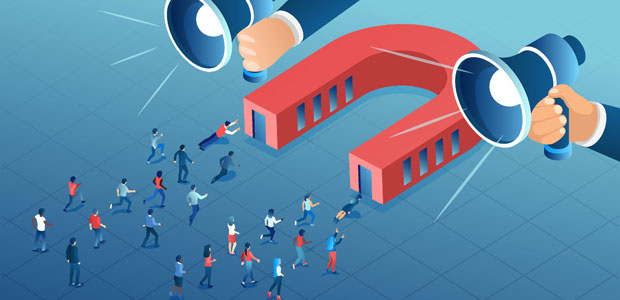
Four essential steps to brand creation
When you’re building something from the ground up, it’s essential to have a strong foundation for support right from the start. Your business needs to have one main idea you can use to create a brand identity, to generate strong branding and to produce an effective brand development strategy to reach your goals.
In this article, we’re going to offer you some free business advice on:
- Our four steps to effective brand creation
- The good and bad side of logo design
- The basics of brand development
Read on to find out how to build a brand and develop it for years to come…
Four steps to effective brand creation
Creating your brand is more than a name and a logo. It’s your products, quality, customer service, brand identity and more. Here are a few ways you can get started and a few things to remember:
1) Decide and learn about your target audience
“Defining your target audience is the first and most essential step towards success for any company or business, especially if you are just getting started.” said Neil Patel.
Your audience should be central to your brand creation. Without a clear idea of their needs, wants and desires, how can you develop a brand effectively?
Ask yourself questions like:
- How are they currently solving the problem?
- How can you help them?
- How are you better than their current solution?
- Where do they usually find new information about your industry?
- How do they normally interact with your competitors?
You can find a lot of these answers in things like testimonials and reviews and on social media. Your best bet is to look into all the places where they may be able to offer feedback and see if it informs your business.
2) Think about your business message
Is it different enough from your competitors? Is it relevant to your ideal audience? You need to analyse those businesses similar to your own and see what they do and what could be better.
Start by writing out a set of questions along these lines and try to find your niche or things you could do better. Following a structure like S.W.O.T analysis may be a good idea to help you define these things and your USP, which will help your brand development later on.
3) Get creative
Now is the time to use all this valuable information you’ve gained about your audience and your competitors to inform your brand name creation, your designer logos, your brand identity and your marketing plans. This is the beginning of your brand development.
One these are decided, start sharing and promoting over multiple media platforms, but particularly those your target audience prefer:
- Social media
- Blogs
- Video content
- Infographics
- Events
- SEO
- Paid online ads
- In print
4) Manage and make good growth decisions
Now that you’ve tried and tested a few marketing platforms and you have a strategy in place, you’ve got to manage them effectively for ROI and impact.
Are your ads bringing in a good return on investment? Is anyone clicking on your social media ads and links? Have your sales increased at all? Remember to check up on things like these to ensure they’re performing as expected. If not, make a change and test, test, test. It’ll help you more in the long run instead of simply doing what you’ve always done.
The good and bad side of logo design
Once you’ve done your research and are in the thick of your business logo creation, remember to really consider your market and to not go overboard. There’s some excellent advice out there from the experts, but in general, it’s advised to stay simple, memorable and flexible enough for use across multiple media platforms. For simplicity, try to think of a design that will look good in monotone, or can be used in a push stamp format. These are generally the ones which will last the test of time.
The Red Cross logo certainly has. It’s become a symbol of neutrality, of safety and of excellent care since it’s creation. You know instantly what it is, it’s simple to use across all media and its brand identity couldn’t be any stronger.
Apple is another, newer logo design which has become synonymous with innovative tech and quality. It’s just a shape of a fruit and doesn’t relate to the products in any real way, but it’s so familiar that it doesn’t even need the brand name. What is does do is have a lot of specifications and precision design features. For example, it’s symmetrical in shape, apart from the leaf which is the same size as the bite. This lends to the quality and look of apple products and further builds the brand.
The 2012 Olympics is probably the most well-known Olympic logo of recent years. It was widely criticised and spawned petitions and calls for it to be redesigned. These issues were mainly with the poor construction and unrecognisable shapes. For example, the second 2 barely looks like a number, and the yellow outline feels unnecessary.
However, the Olympic committee persevered, claiming it focused on the spirit of the event and rejected clichés from previous logos.
The basics of brand development
You don’t build a relationship with all of your customers and encourage them to purchase then completely stop your communication. To ensure longevity, you need to continually reassess and change things to stay front of mind - this is called brand development.
It’s all about staying relevant, building trust and maintaining your service and quality levels. It’s not something that’s ever really finished.
But what is brand development?
It’s a mix of anything and everything you do to market your business, from your brand identity to your logo, your name and more. All of these feed into your brand development strategy and these are best looked after by a good brand manager.
At the end of the day, brand development is central to your brand creation and future, so do your research, create a good designer logo and make the most of the free business advice available to you online. It’s a long term build, not an afternoon job, so take your time and learn how to build a brand properly.


